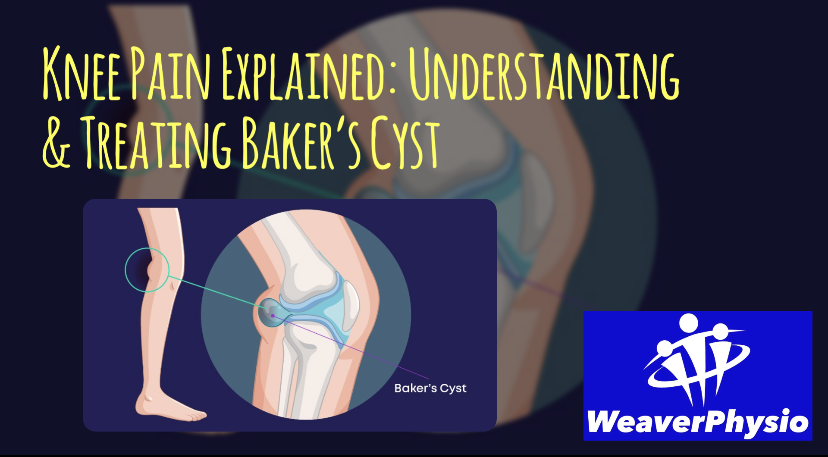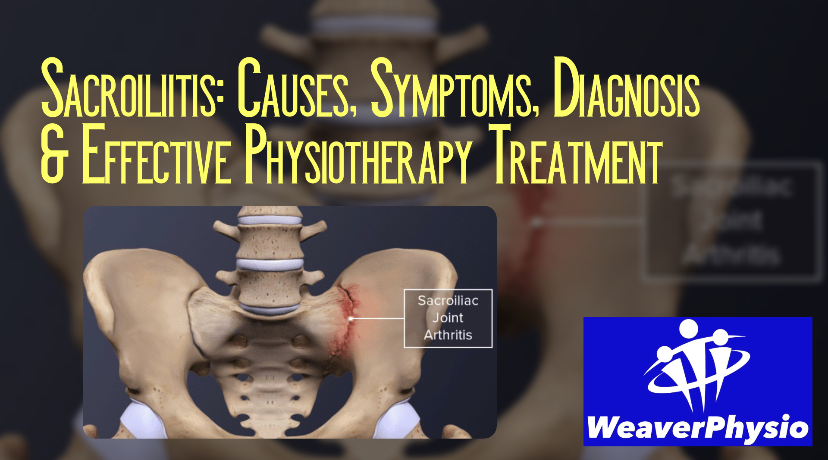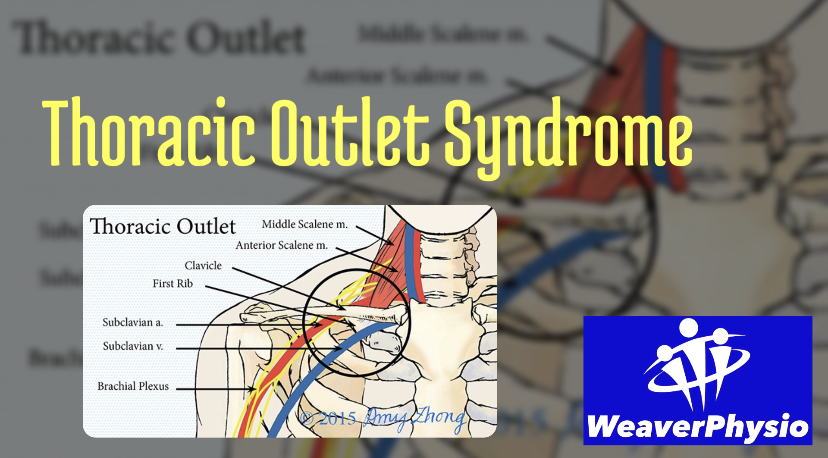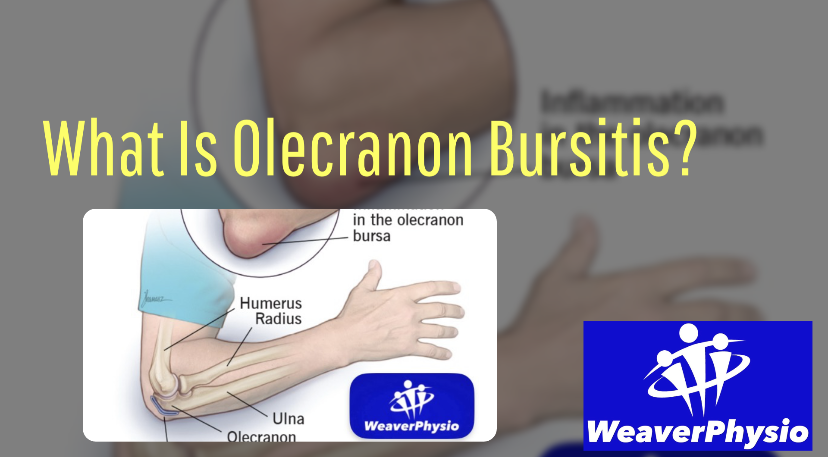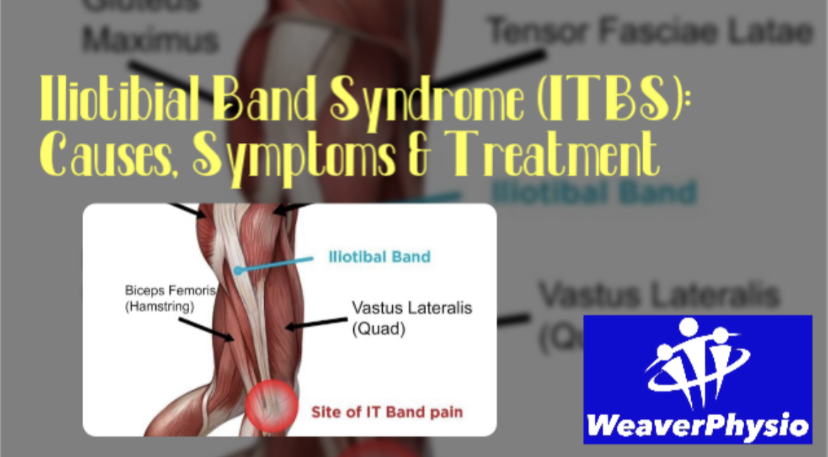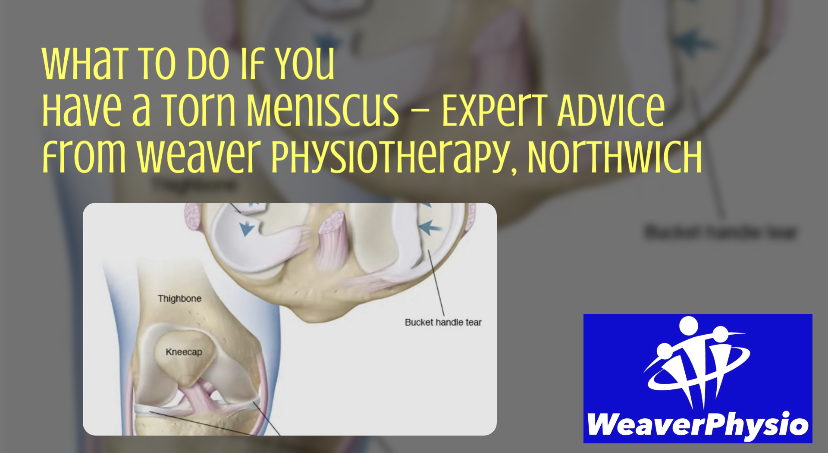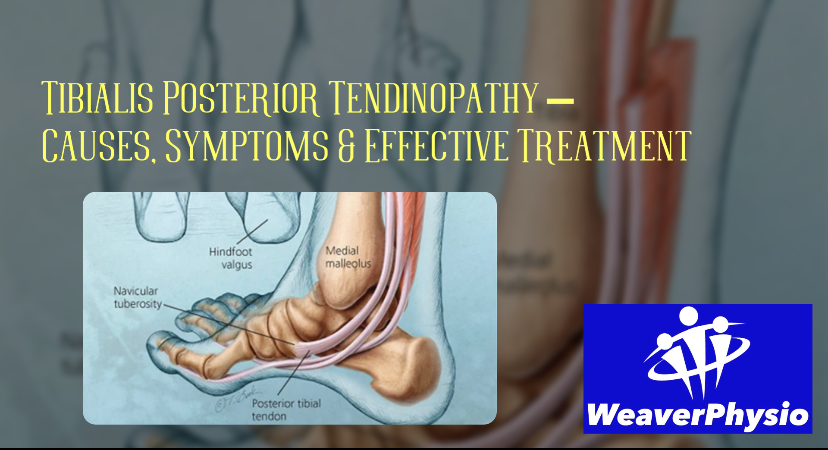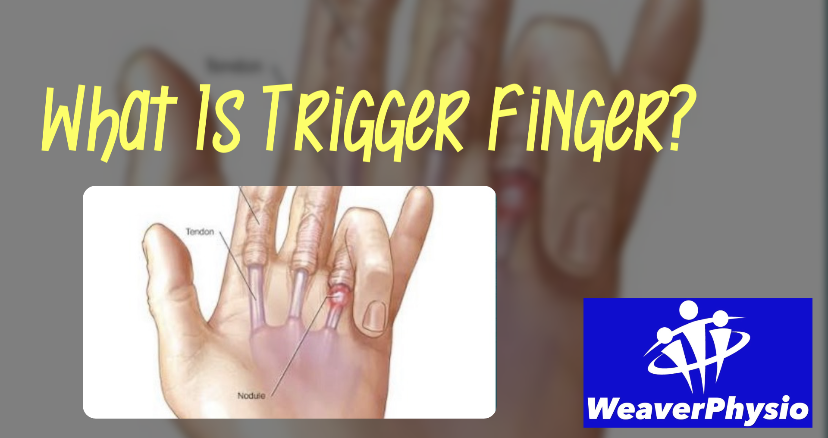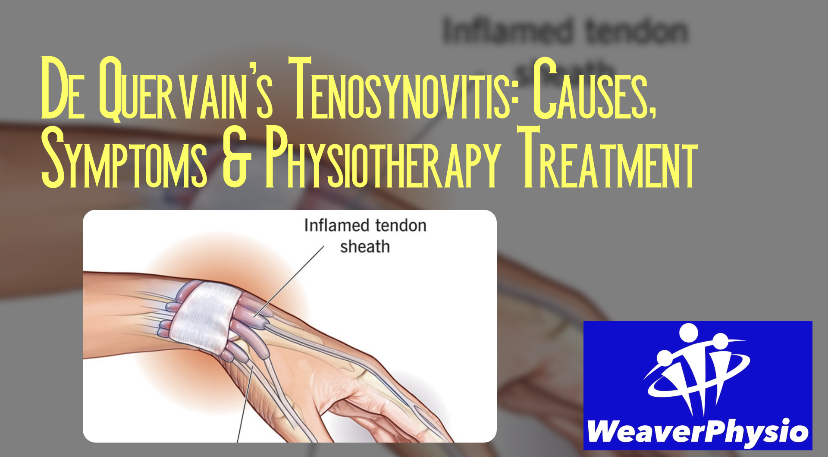BPPV (Benign Paroxysmal Positional Vertigo)
Causes, Symptoms, Treatment & How Physiotherapy Can Help
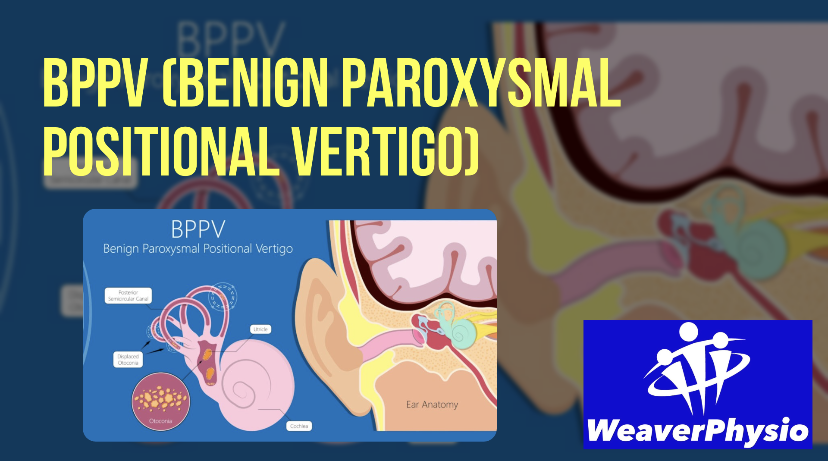
Do you ever feel like the room is spinning when you roll over in bed, look up, bend forward, or turn your head quickly? Does the dizziness last just a few seconds but feel intense and unsettling? If so, you may be experiencing BPPV – Benign Paroxysmal Positional Vertigo, one of the most common causes of dizziness.
At Weaver Physiotherapy & Sports Injury Clinic in Northwich, Cheshire, we regularly help people who are living with dizziness, vertigo, or balance issues using highly effective vestibular physiotherapy and repositioning techniques. With the right diagnosis and treatment, BPPV is very treatable – in fact, most people can experience significant relief within just 1–3 sessions.
In this comprehensive blog, we’ll explain what BPPV is, why it happens, common symptoms, how it is diagnosed, and most importantly – how expert physiotherapy can treat it quickly and safely.
What Is BPPV?
BPPV stands for Benign Paroxysmal Positional Vertigo.
• Benign – it is not dangerous or life-threatening.
• Paroxysmal – symptoms come in sudden, brief episodes.
• Positional – symptoms are triggered by changes in head position.
• Vertigo – the sensation that you or your surroundings are spinning.
BPPV is caused by tiny calcium crystals (called otoconia) in the inner ear that become dislodged and move into the semicircular canals – the part of the inner ear responsible for detecting head movement and balance.
When these crystals move around in the canal, they send false signals to the brain, causing the sensation of spinning or dizziness.
Understanding the Inner Ear and Balance System
Your inner ear contains three semicircular canals filled with fluid. These canals detect rotational movement. Tiny crystals normally sit in a different part of the inner ear called the utricle, helping you sense gravity and linear movement.
However, when these crystals break loose and move into the semicircular canals, the brain receives conflicting information about your movement and balance.
The result? Vertigo, dizziness, imbalance, nausea, and light-headedness.
How Common Is BPPV?
BPPV is the most common cause of vertigo, accounting for around 20-30% of all dizziness-related medical visits.
• It affects 1 in 10 people at some point in their lifetime.
• It is most common in people over 50, but can affect any age.
• Women are more likely to develop BPPV than men.
• It often recurs if left untreated – but responds extremely well to physiotherapy.
What Causes BPPV?
In many cases, there is no clear reason why BPPV starts – this is known as idiopathic BPPV. However, several factors are known to increase the risk:
1. Age-Related Degeneration
As we age, the structure of the inner ear can weaken, making it easier for crystals to detach.
2. Head Injury or Trauma
Even a minor knock to the head can dislodge crystals within the ear.
3. Prolonged Bed Rest or Inactivity
Illness, surgery, or immobility can allow crystals to settle in the semicircular canals.
4. Ear Infections or Labyrinthitis
Inflammation in the inner ear can disturb the vestibular system.
5. Migraine History
Migraine sufferers have a higher risk of developing vestibular disorders, including BPPV.
6. Osteoporosis or Vitamin D Deficiency
Both can affect the calcium metabolism in the inner ear.
7. Post-Surgery
Dental work, ear surgery, or lying flat during operations may trigger BPPV in some people.
Symptoms of BPPV
BPPV causes brief episodes of vertigo, lasting from a few seconds to a minute, and typically triggered by specific head movements. Common symptoms include:
• Sudden spinning sensation (vertigo)
• Dizziness or light-headedness
• Feeling off-balance or unsteady on your feet
• Nausea (sometimes vomiting)
• Blurred vision or difficulty focusing
• Anxiety or fear of movement
• Symptoms triggered by:
• Rolling over in bed
• Looking up (e.g., reaching for a shelf)
• Bending forward (e.g., tying shoes)
• Turning the head quickly
• Lying down or sitting up
Importantly: BPPV does NOT cause constant dizziness, hearing loss, ringing in the ears (tinnitus), or neurological symptoms. If these symptoms are present, another condition may be involved.
How BPPV Affects Daily Life
Although BPPV is not dangerous, the symptoms can be extremely disruptive. People with BPPV often report:
• Difficulty sleeping due to dizziness when turning in bed
• Fear of falling
• Avoiding certain positions or movements
• Poor concentration or “brain fog”
• Struggling with driving, work, or daily activities
• Reduced confidence and anxiety
• Increased risk of falls in older adults
Left untreated, BPPV can lead to reduced mobility, withdrawal from activity, and poor quality of life.
How Is BPPV Diagnosed?
At Weaver Physiotherapy & Sports Injury Clinic, our Chartered Physiotherapists perform a detailed assessment to confirm whether your dizziness is caused by BPPV.
The process includes:
1. Medical History
We ask about your symptoms, triggers, duration, previous episodes, injuries, medical conditions, and lifestyle.
2. Positional Testing
We use specific movements and positions to provoke symptoms and observe your eye movements (nystagmus). The most common test is the Dix-Hallpike Test which helps determine:
• Which ear is affected
• Which semicircular canal is involved
3. Balance and Gait Assessment
We assess your balance, walking, and coordination to rule out other vestibular or neurological issues.
In some cases, further investigations (MRI, CT scan, hearing tests) may be recommended if symptoms are unusual or persistent.
Can BPPV Go Away on Its Own?
Yes, mild cases may resolve naturally over a few weeks or months. However, many people experience recurrent episodes if not properly treated.
The most effective and quickest way to eliminate BPPV is through vestibular physiotherapy and repositioning techniques.
Physiotherapy Treatment for BPPV
At Weaver Physio, we specialise in vestibular rehabilitation – a highly effective approach to treating vertigo and balance disorders. Treatment is safe, gentle, and often provides instant relief.
The main goal is to move the dislodged crystals back into the correct position in the inner ear using specific manoeuvres.
1. Canalith Repositioning Manoeuvres (Epley Manoeuvre)
This is the most widely used and successful treatment for BPPV affecting the posterior semicircular canal (the most common type).
During this treatment, we guide you through a sequence of head and body positions designed to move the crystals out of the semicircular canal and back into the utricle.
• Takes only a few minutes
• Often relieves symptoms immediately
• Success rates of 80-90% after just 1-2 sessions
2. Semont Manoeuvre
An alternative technique used when the Epley manoeuvre is unsuitable or less effective.
3. Brandt-Daroff Exercises
These are home exercises that help the brain adapt and encourage the crystals to settle. Useful for persistent or recurrent BPPV.
4. Horizontal or Anterior Canal Techniques
If a different semicircular canal is affected, we use specific repositioning techniques tailored to the canal involved.
What Happens During a Treatment Session at Weaver Physio?
You will receive:
✅ A complete vestibular assessment
✅ Clear diagnosis and explanation
✅ Repositioning manoeuvres (e.g. Epley)
✅ Guidance on aftercare positions
✅ Home exercises if needed
✅ Balance and stability training (if necessary)
✅ Advice on preventing recurrence
✅ Reassurance and support throughout
Many patients feel immediate relief after just one session.
Vestibular Rehabilitation Exercises
If dizziness persists or your balance has been affected, your physiotherapist may prescribe a personalised vestibular rehabilitation programme, which may include:
• Gaze stabilisation exercises – to improve visual focus while moving your head
• Habituation exercises – to reduce dizziness in specific positions
• Balance and coordination training – to improve stability and prevent falls
• Walking drills and functional movement retraining
These exercises help retrain your brain to cope with any lingering dizziness and restore confidence in movement.
Lifestyle & Self-Care Tips for BPPV
In addition to physiotherapy, you can support your recovery with a few simple lifestyle habits:
✅ Move slowly when changing position
✅ Sleep with slightly elevated pillows
✅ Avoid lying on the affected side (short term)
✅ Stay hydrated
✅ Manage stress and anxiety
✅ Avoid sudden head movements (early phase)
✅ Complete any prescribed home exercises
✅ Maintain good posture
Can BPPV Come Back?
Yes – approximately 40-50% of people will experience a recurrence within 5 years, especially if left untreated.
However, if you learn early warning signs and seek rapid physiotherapy treatment, it can be resolved quickly each time.
At Weaver Physio, we also teach you self-management strategies to handle minor recurrences at home.
When Is BPPV NOT BPPV?
Although BPPV is common, not all dizziness is BPPV. You should seek immediate medical advice if you have:
❌ Sudden, severe headache
❌ Weakness or numbness in face or limbs
❌ Slurred speech or difficulty speaking
❌ Double vision or visual changes
❌ Collapse or loss of consciousness
❌ Constant dizziness (not positional)
❌ Hearing loss or tinnitus with dizziness
These may be signs of other vestibular or neurological conditions that require urgent attention.
Why Physiotherapy Is the Gold Standard Treatment for BPPV
✅ Fast, non-invasive, drug-free
✅ Addresses the root cause – not just symptoms
✅ Highly effective (80-90% success rate)
✅ Prevents recurrence with education and exercises
✅ Improves confidence and balance
✅ Reduces risk of falls in older adults
At Weaver Physiotherapy & Sports Injury Clinic, our specialist physiotherapists are highly trained in vestibular assessment and repositioning techniques, making us one of the best clinics in Cheshire for treating dizziness and vertigo.
Why Choose Weaver Physiotherapy & Sports Injury Clinic in Northwich, Cheshire for BPPV Treatment?
We are trusted by patients across Northwich, Knutsford, Winsford, Middlewich, Frodsham, Tarporley, and the wider Cheshire area for expert diagnosis and treatment of BPPV and dizziness.
Here’s why:
✅ Experienced Chartered Physiotherapists
✅ Specialists in vestibular rehabilitation and balance disorders
✅ Accurate diagnosis and safe repositioning manoeuvres
✅ Access to advanced techniques like Epley, Semont, Brandt-Daroff
✅ Personalised treatment plans
✅ Relaxed, friendly, and professional environment
✅ 70+ years of combined experience
✅ Trusted by local GPs and consultants
✅ Convenient appointments & free onsite parking
✅ We treat patients of all ages (including older adults who are at higher risk of BPPV)
Our mission is to help you recover quickly, regain confidence, and return to normal life without dizziness.
Do I Need a GP Referral?
No referral is needed. You can book directly with us.
Private health insurance often covers vestibular physiotherapy.
How Many Sessions Will I Need?
Most people experience improvement in just 1-3 sessions, depending on the severity and type of BPPV. More complex cases may need a short course of vestibular rehabilitation.
Take Control of Your Dizziness – Book Your BPPV Assessment Today
If you are struggling with vertigo, dizziness, or balance problems, don’t wait and hope it goes away.
The sooner you get assessed, the faster you can recover.
📞 Call Weaver Physiotherapy & Sports Injury Clinic today on 01606 227484
🌐 Visit www.weaverphysio.com
📍 Serving Northwich, Knutsford, Winsford, Middlewich, Frodsham, Tarporley & all surrounding Cheshire areas
Let our expert physiotherapists help you stop the spinning, restore your balance, and get your life back.
